Certainly, the basic “tight line” technique has been around for many years. George Harvey and Joe Humphreys pioneered the technique when bamboo and cat gut where the de facto reg. But over the past several years, the proliferation of tight line techniques that are most often referred to as “Euro-style” nymphing has continued to gain steam and we’ve seen tons of leader formulas and styles to go with it. Czech leaders, French, Polish, Spanish, hell I even think there’s a Latvian leader these days.
A lot of these formulas can be complicated and intimidating to the beginner. Here’s a formula for a basic tight lining trout sighter rig that’s simple to put together and is one you can make without all the headache of buying 37 spools of Maxima (although there’s nothing wrong with owning 37 spools of Maxima). I’ve been using this setup for a while now with good success and find it’s the easiest and most reliable setup for beginners and for teaching people the basics of tight lining.
What you’ll need
RIO Suppleflex leader 13.5’ 4X – This is a soft nylon leader that, as its name suggests, is very supple. Originally designed for long delicate casts with dry flies, thanks to its sensitivity, it’s the perfect material for feeling your rig as it moves through the current and bounces along the bottom.
RIO or Umpqua 3X Two-Tone Indicator Tippet – This is the material that will serve as your “indicator”. If you’re unfamiliar with this line, it’s basically nylon in bright green and orange alternating colors. The Umpqua line changes color every 18” as opposed to RIO’s which changes color every 12”. That color change and the more often it happens helps your eyes pick up the line as you make your drift.
Tippet Rings – If you haven’t picked these up yet, you’re missing out on fly fishing’s “best thing since sliced bread”. You should be using them for all your nymphing needs. They save time, money and a lot of frustration. One note about tippet rings if they’re new to you: for the love of Job don’t take it off the swivel until you tie it to the line. It’s like trying to put an oyster in a parking meter; it’s simply not going to happen. If you take it off the swivel then try to tie it on, it’s going to end up on the ground, lost forever and with you having to put a dollar in the swear jar.
4 through 7X tippet – Whichever brand of fluorocarbon you like, it is denser and sinks faster than nylon.
A Couple of your favorite Nymphs and maybe some split shot – I’ll leave the nymph choice up to you or another article, but make sure that your “point” fly has enough weight to carry the rig down deep and fast. Add split shot to get those flies down fast and keep them on the bottom while you bounce along if you’re fishing faster currents and deeper water. I generally like one or two split placed about midway between flies but will add another above the top fly if I need to get down farther and faster.

The Setup
Take the RIO Suppleflex leader and cut off about 24” so you get down to around the 3X diameter section of the leader and a length of 11-11.5’. Then, tie in 24 to 30” of your indicator material to the leader with a blood knot. Make that knot strong, don’t half-ass it. Next, tie your tippet ring to the end of the indicator line and tie on your tippet to the tippet ring.
One note: smaller diameter tippet sinks faster and creates less drag. Faster currents will require you to get your flies in the strike zone with a short drift, so go as light as you dare with your tippet — lets say 5x.
Don’t vary the diameter size on you tippet, different size transitions will create drag in your system and the key to successful tight lining is the elimination of drag. Generally speaking, start with around three to four feet of tippet then tie in another section of 18” or so with a surgeon’s knot, leaving the top tag unclipped so you can tie a fly to it. Vary the tippet length depending on the depth and speed of water you’re fishing. Tie on your flies, heaviest on the bottom, lighter up top and add shot if needed.
Your finished rig should end up around eighteen feet or just about two times the total length of your rod (10 foot rods in 3 through 5 weights are ideal for tight lining).
Hopefully, this simple rig will help to demystify some of the challenges of getting started with tight line and Euro-style nymphing rigs. If so, you’ll be eating blintzes and drinking wine instead of staying up all night with the cold sweats wondering if your 32 foot leader will turn over that size 2 Vladi worm.




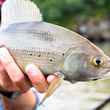






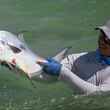
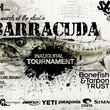



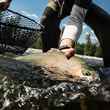
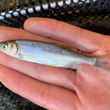



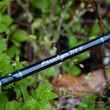





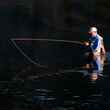





Comments
Sahil replied on Permalink
Another great article on the road to simplyifing Euro nymphing. I'm personally can't wait for the Moldovian-style to eventually emerge.
Paul Swidzinski replied on Permalink
Question about tippet rings. I have been using a similar leader setup for a year. Then I tried out tippet rings for a week or two. I felt like I was fishing blindly compared to fishing with no tippet ring. I felt like I couldn't feel anything, I was late to set hooks, and could tell if I was ticking the bottom or not. Is that a feeling others have experienced? I know that I should go with whatever gives me the most confidence and works best for me, but I'm interested to know if I'm an outlier.
Pat Barnett replied on Permalink
Love the article, nice set up! Quick question, 4X super flex into 3x indicator?
-Pat
Jim k replied on Permalink
I use cortland .011 sighter on 4x cut 20 inchs off the 4x,then put sighter on.
Then tippet ring..
Little disagreement I taper my tippet from 4x to 5x about 24 inchs each ...
Or you could do 2 and 1/2 ft of 4x then 18 inchs of 5x ..
Then use perfection knot for your dropper fly ...
If not my rio 5x floroplus bunchs all up when you cast.....
By using 5x if you snag it breaks sooner than 4x saving you a fly....
If you can cast 5x 4ft long go for it but I cannot and if there is any wind its worst ....
Rob Stanton replied on Permalink
Yeah, it would be interesting to know what ol' Count Drac was using over there in Transylvania. Most likely something with lots of blood knots holding together.
Enzo replied on Permalink
How many flies on this set up? 2 or 3? Where do you place them?
Pages